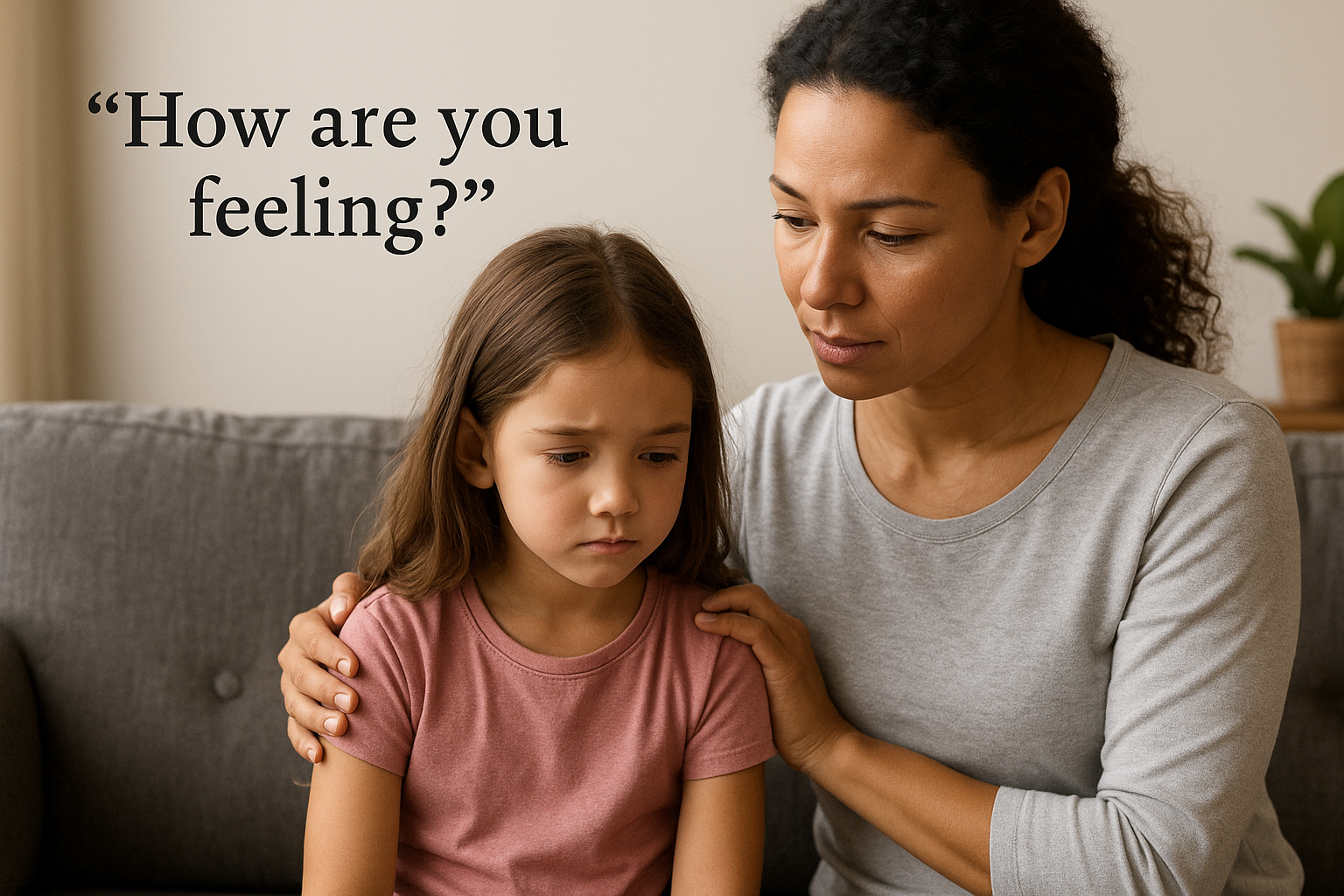Helping children understand and manage their emotions is one of the most important parts of parenting. Emotional intelligence (EQ) is just as important as academic success—it impacts how kids relate to others, handle challenges, and feel about themselves.
The good news? Teaching emotional awareness doesn’t require formal lessons. It happens in the everyday moments when we listen, label feelings, and model healthy reactions.
Here’s how to guide your child in understanding their emotions in a way that builds empathy, self-regulation, and confidence.
Why Emotional Intelligence Matters
Kids with strong emotional intelligence are more likely to:
- Communicate their needs effectively
- Solve problems calmly
- Build healthy relationships
- Bounce back from frustration
- Show empathy and kindness
Emotions are not something to avoid or “fix”—they’re signals. Teaching kids how to read and respond to these signals sets them up for lifelong success.
1. Name the Feelings
Many children don’t act out because they’re “bad”—they’re just overwhelmed by emotions they don’t understand.
Start by teaching your child the names of common feelings:
- Happy
- Sad
- Angry
- Scared
- Excited
- Frustrated
- Embarrassed
- Proud
Use everyday moments to label their emotions and your own:
- “You look really frustrated that the toy isn’t working.”
- “I feel proud of how hard you tried.”
- “It’s okay to feel nervous. That’s a normal feeling.”
The more words your child has for their emotions, the better they can express them.
2. Validate Their Feelings—Even When They’re Big
Children need to know that their emotions are okay, even when their behavior needs correction.
Instead of saying, “There’s nothing to cry about,” try:
- “You’re really sad right now. That’s okay.”
- “I understand that you’re angry. Let’s take a breath together.”
- “It’s okay to feel mad. It’s not okay to hit.”
Validation doesn’t mean you agree—it means you acknowledge their experience.
3. Use Books and Stories to Explore Emotions
Children learn best through storytelling. Books with characters experiencing different feelings help them recognize and talk about emotions in a safe, non-threatening way.
Great books to explore:
- The Color Monster by Anna Llenas
- Today I Feel Silly by Jamie Lee Curtis
- My Many Colored Days by Dr. Seuss
- How Do You Feel? by Lizzy Rockwell
As you read, ask:
- “How do you think the character feels?”
- “What would you do if you felt that way?”
- “Have you ever felt something like that?”
Books open the door to emotional conversations.
4. Model Emotion Regulation
Children learn how to handle emotions by watching you. If you yell when you’re angry, they learn that anger = yelling. If you take deep breaths and speak calmly, they learn self-control.
Try to model:
- Taking breaks when overwhelmed
- Saying “I’m feeling stressed, I need a minute”
- Talking through how you manage your feelings
- Apologizing when you lose your cool
You don’t need to be perfect—you just need to be honest and intentional.
5. Teach Simple Coping Strategies
Give your child tools to calm themselves when emotions feel too big.
Easy strategies for kids:
- Deep breaths: “Smell the flower… blow out the candle”
- Counting to 10
- Drawing how they feel
- Using a “calm down corner” with pillows, fidgets, or books
- Squeezing a stress ball
- Going outside for a walk or fresh air
Practice these tools before big feelings hit—so they know what to do when they need them.
6. Talk About Emotions in Everyday Life
Emotional education doesn’t happen only during meltdowns. Use calm, everyday moments to explore feelings:
- “How did that make you feel?”
- “What do you think your friend felt?”
- “What helped you feel better when you were sad?”
These conversations build emotional awareness and social understanding.
7. Encourage Empathy
Teach your child to recognize feelings in others by asking:
- “How do you think they felt when that happened?”
- “What could you do to help your friend feel better?”
- “Have you ever felt that way?”
Point out real-life examples of kindness and empathy in action.
Empathy helps children build strong friendships and be better problem-solvers.
8. Be Patient With Big Emotions
Children aren’t born knowing how to manage emotions—it takes years of practice.
When your child has an emotional meltdown:
- Stay calm
- Don’t punish the feeling—address the behavior
- Comfort them while they calm down
- Talk about it later, when they’re ready
Remember, your calmness helps regulate their nervous system.
9. Create an Emotion-Rich Environment
Make emotions a regular, safe part of home life.
Try:
- Hanging an “emotion wheel” or chart with faces
- Making a habit of “feeling check-ins” at dinner or bedtime
- Using dolls or pretend play to act out different emotions
- Letting your child journal or draw their feelings
When emotions are welcomed, kids feel more secure and understood.
Emotionally Intelligent Kids Become Emotionally Healthy Adults
Teaching kids about emotions isn’t about avoiding conflict or pretending everything’s fine—it’s about giving them the tools to understand, express, and navigate what they feel.
With your guidance, they’ll learn that emotions are not scary—they’re messages. And with time, patience, and love, they’ll become confident, compassionate people who know how to care for themselves and others.
And it all starts with a simple, everyday question: “How are you feeling right now?”
